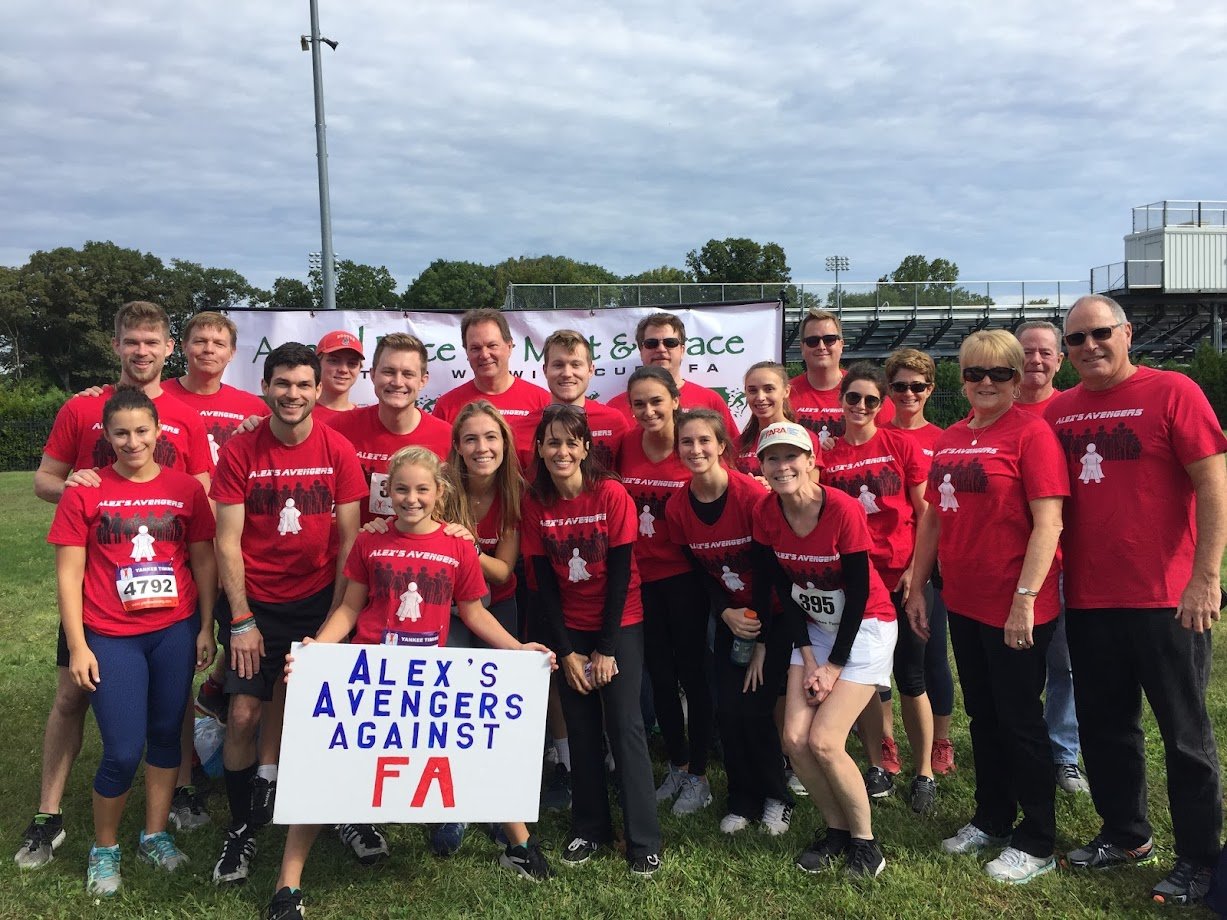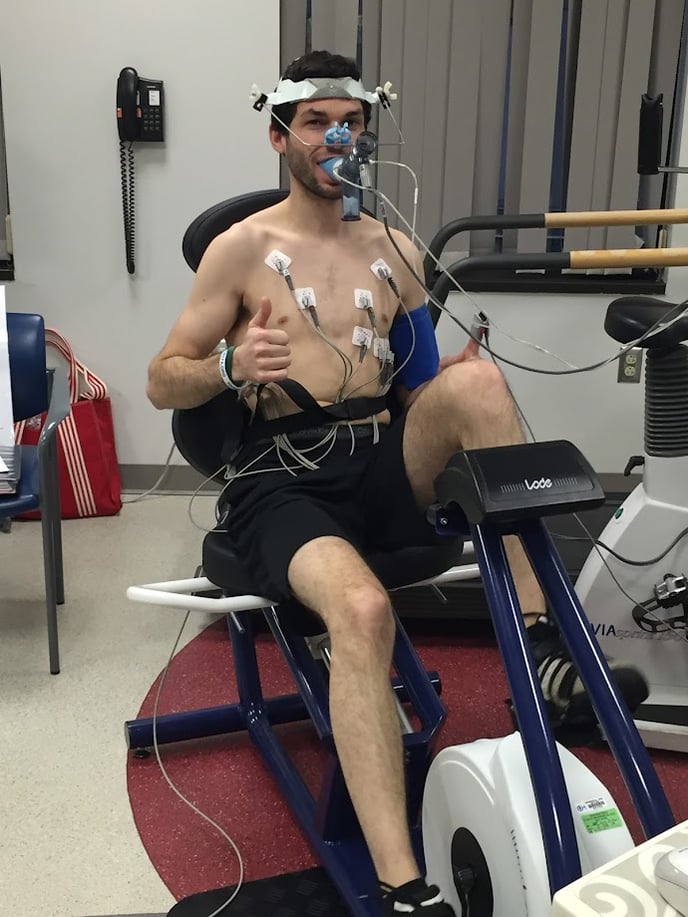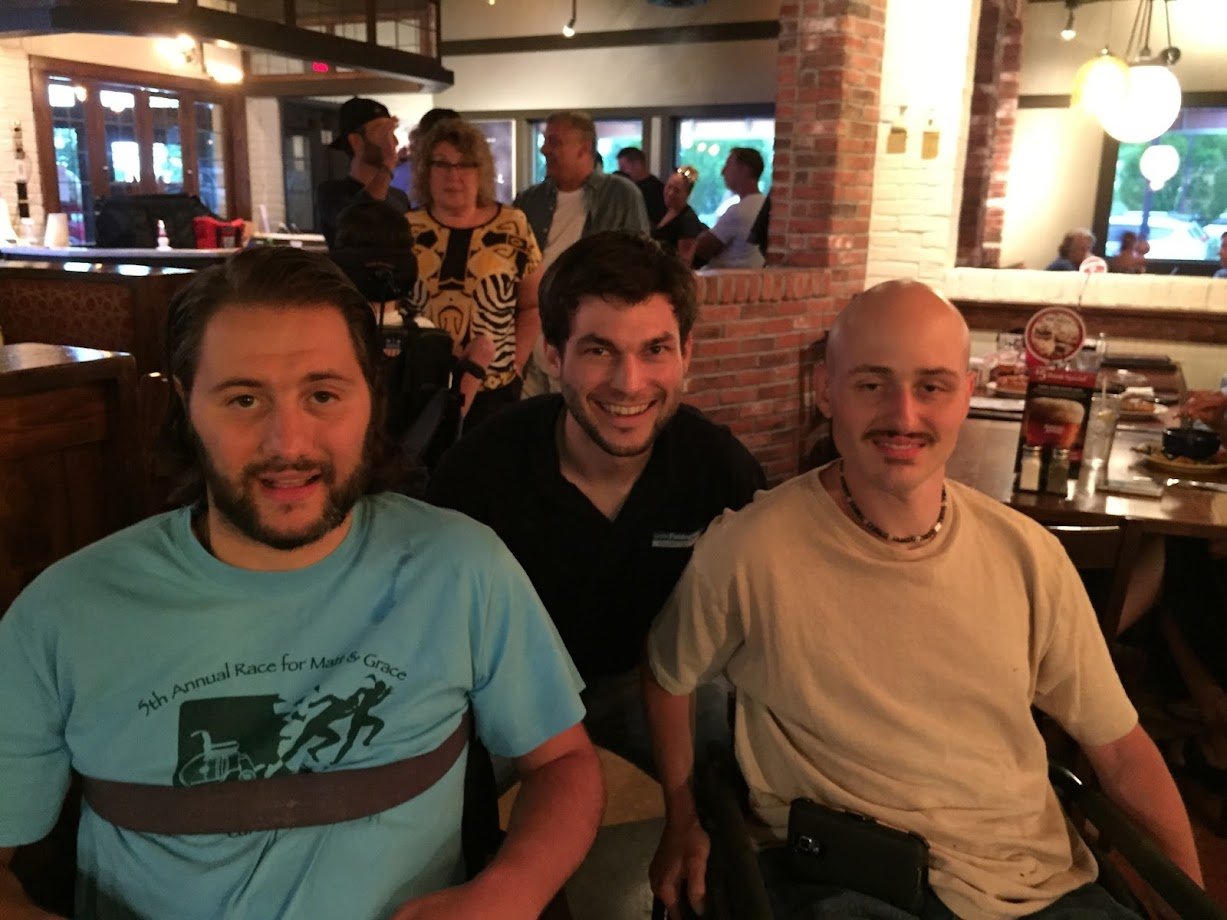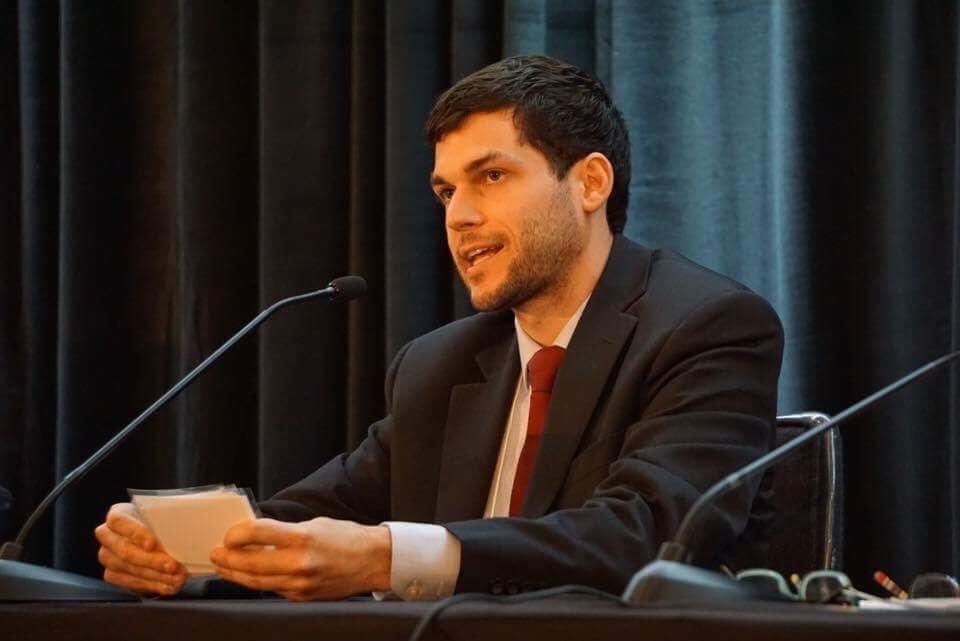Saturday 21 May 2022 is Friedreich's Ataxia (FA) Awareness Day. In recognition of this special day, we welcome guest blogger Alex Fielding to talk about his experience of this rare disease.
Friedreich's Ataxia (FA) Awareness Day
Every year, on the third Saturday in May, the world celebrates Friedreich's Ataxia (FA) Awareness Day. It's a day that holds different meanings for different audiences.
- For most people, FA is nothing more than another distant and unknown rare disease, making FA Awareness Day just another spring day spent tending to the garden or visiting family and friends.
- For those in the FA community (family, friends, scientists, industry partners etc.), it is an opportunity to be proud of their support, the advancements in FA science and the progress made toward future therapies.
For myself, and the estimated 15,000 individuals around the world living with FA, it is a day to reflect: How did I get here? How am I managing life with an incurable rare disease? What have I gained from this unwanted experience?

What is Friedreich's Ataxia?
Friedreich's Ataxia (FA) is a progressive, degenerative genetic neuro-muscular disease. Although it is a rare disease, it is the most common inherited hereditary ataxia, with a prevalence of about one in 50,000 people in affected populations. As an autosomal recessive disorder, both parents of affected children must have one defective gene. While one in 50,000 might belong-shot odds (unfortunately I didn't have the same luck playing the lottery!), the estimated prevalence of carriers is much more common–just one in 90. When I'm in a crowded restaurant, I often think about the fact that there's a good chance there are a few unknown FA carriers at the tables around me. I hope they never meet...
FA is caused by a GAA trinucleotide repeat in the first intron of the gene that codes for frataxin, a critical protein used in iron-sulfur cluster formation during mitochondrial energy production. For those of us without a degree in genetics, which means a few extra bases in my DNA cause a host of issues. These cellular issues manifest clinically as neuro-muscular symptoms. Most individuals with FA begin seeing symptoms during childhood and adolescence. Typical early symptoms include imbalance, loss of coordination, scoliosis, dysarthria, and fatigue (thus the "ataxia" characterization that Nikolaus Friedreich gave us when first describing the disease).
As the disease progresses, most individuals lose the ability to walk independently, first relying on friends and furniture, then canes, walkers and rollators, and finally wheelchairs and power chairs. In later stages of the disease, more serious complications can occur, including vision impairment, diabetes, and cardiomyopathy. These complications can lead to an early death for those fighting FA.
My diagnostic odyssey
I consider myself the rare of the rare. Only about 25% of individuals with FA are diagnosed after adolescence, in their adult lives. In my mid-20's I found myself noticing balance and coordination issues and finally received a genetic confirmation of FA at 26. Being a stubborn, independent guy, I first brushed off these minor inconveniences. I had just graduated with an engineering degree, started a promising career, and was busy building relationships with family and friends. I was in my prime and certain that there couldn't be something seriously wrong with me.

Alex with his mom and two brothers on Mt. Monadnock, New Hampshire (last mountain climbed pre-diagnosis)
That all changed one afternoon when I found myself standing on a 4,800 ft. peak in the White Mountains of New Hampshire, silently panicking that I was about to fall from the cliffs at the side of the trail. That sobering experience knocked some sense into me and put my ego in check. That’s where my diagnostic odyssey began, and although “odyssey” is a common moniker used to describe the diagnostic journey, I believe it falls short of capturing the physical and emotional toll of the entire diagnosis.
I won't belabor you with all the details, but my 2.5 year “odyssey” spanned several states (from Massachusetts to Texas), many experienced neurologists, a handful of hospitals, liters of blood for testing, nerve conduction studies, four brain and spinal MRI's, a lumbar puncture (ouch!), EKG's, echocardiogram, CT scans, and finally a genetic test that confirmed FA was the culprit. I was left alone, terrified, depressed, poor (I learned rare disease testing is not free!) and felt helpless.
 Patient participation in clinical research studies is critical to advance scientific understanding and potential therapies for rare diseases
Patient participation in clinical research studies is critical to advance scientific understanding and potential therapies for rare diseases
Friedreich's Ataxia Research Alliance (FARA)
Immediately after my diagnosis, I began learning everything I could about FA–remember, I'm stubborn. I was going to beat this thing! During my research, I discovered the Friedreich's Ataxia Research Alliance (FARA),a patient advocacy organization founded in 1998 by a group of patient families and leading FA scientists. FARA is dedicated to the pursuit of scientific progress
to better understand FA and develop meaningful therapies and eventually a cure for FA. I had found my home.
Over the last seven years, I have spent my time with FARA to spread awareness about FA, raise funds to support research, educate private industry partners and regulatory agencies, and most importantly, meet hundreds of inspiring FA patients and families who are now my good friends (we are FAmily). When I was first diagnosed, I thought I understood FA because I followed the core science, but I have been constantly humbled by how little I know and how much I still have to learn from others.

Alex with his friends Matt and Viny at a local FARA fundraising event. Sadly Matt passed away in 2021 after a courageous 27 year battle with FA.
FAmily is Bigger than You
I learned my 2.5-year diagnosis journey was fast! Friends with FA can spend 4-6 years searching for answers (some of my friends spent decades!) and often end up with a misdiagnosis. With symptom onset and presentation varying from individual to individual, FA can present clinically like other hereditary ataxias (SCA's), cerebellar ataxias, multiple sclerosis, Charcot-Marie-Tooth, ataxia telangiectasia, etc. It's only with genetic testing that a FA diagnosis can be confirmed. Unfortunately, not all doctors or neurologists are aware of this testing and FA, as a rare disease, is not readily on their mind. I've found that a "successful" diagnosis really depends on the patient and/or families advocating for their own health and pushing for new testing approaches.
Unfortunately, there is a large element of luck in rare disease diagnosis; luck that you will connect with a physician knowledgeable about your condition, luck that you will have the funding to complete the proper testing, luck that you will stumble upon the right information summarizing your symptoms and leading you to pursue the pertinent diagnostic avenues. As I reflect on this FA Awareness Day, I consider myself a successful individual, still managing to pursue my passions and still full of ambition to continue my personal growth. Living with my FA diagnosis for nearly eight years, I have continued to maintain strength and coordination and to remain ambulatory. I live independently in my own house with my dog Mia who keeps me smiling even during the darkest days of FA. I work full-time, running operations for my family's manufacturing business, and continue to volunteer my time with FARA. Staying active, busy and informed have been critical therapies for my management of FA.

Alex speaking to Food and Drug Administration (FDA) during the first Patient-Focused Drug Development meeting for FA
The future
Currently there is a small-molecule therapy aimed at slowing the progression of FA under evaluation by the U.S. Food and Drug Administration. This could be the first approved treatment for FA, with clinical trials in protein replacement strategies, gene therapies, DNA transcription modifiers, and other approaches close behind. These successes did not happen overnight. I am humbled every day by the tireless commitment of the FARA team, all the FA scientists and researchers, and the entire FA community pulling together and pushing for progress.
Ron Bartek, President of FARA has a great saying that captures the collaborative effort of FA research:
"Acting alone there is little we can accomplish, acting together there is little we will not accomplish".
Today, I reflect on my journey. Being thrown into an unknown world, the world of rare diseases, is not a path that one chooses. It is not a path for the lighthearted, but a burden for the resilient, stubborn and courageous. It is a path full of some of the best humans I have had the honor to meet. There are days when I am confident that I'll beat this and return to the top of that mountain in New Hampshire. There are days I want to give up and tumble down the cliffs. But in the middle, there's me; an ambitious guy with his own dreams and aspirations. And yes, a little thing called FA getting in my way with everything I do. But I choose to keep moving forward because I believe that Together we WILL Cure FA!

Alex and Kyle Bryant, FARA ride ATAXIA Founder & Director, riding their recumbent trikes in Valley Forge, PA
Kyle has a documentary available on YouTube about FA, watch “The Ataxian”
For more information on FA and FARA, please visit www.curefa.org
Delivering life-changing answers
People with genetic diseases wait an average of five years for a diagnosis. Congenica is working towards a future where diagnostic odysseys are shortened from years to days, helping to provide appropriate genomic information for more people, faster. Find out more about our work.
.png)

.png?width=320&height=192&name=Untitled%20design%20(8).png)
.png?width=320&height=192&name=Since%202016%2c%20the%20number%20of%20women%20working%20in%20STEM%20fields%20in%20the%20UK%20has%20increased%20by%20216%2c552%2c%20taking%20the%20total%20number%20over%20the%201%20million%20mark%20for%20the%20first%20time.%20Women%20now%20make%20up%2024%25%20of%20the%20STEM%20workforce%20i%20(2).png)
-1.png?width=320&height=192&name=Deciphering%20Developmental%20Disorders%20(1)-1.png)